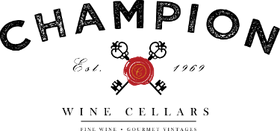History, as told by Paul Wasserman.
As the story goes, Georges Huré rather reluctantly founded the estate in 1960, to satisfy the insistent dreams of his wife Jeanne. The name Huré Frères came about in 1971 when Georges passed on management of the domaine to his three sons—Jean Marie, Marc and Raoul. Since 2008, Raoul’s son, François, has been at the head of the estate after pursuing many other opportunities and inspiring wine regions as a young man. His prior stints include: falling in love with the terroir of Burgundy while obtaining his oenology degree in Dijon, becoming fascinated with biodynamics while working with Jean Pïerre Fleury, and exploring the vineyards of Australia and New Zealand. These experiences allowed François to understand the inherent advantages of both New and Old World wine regions: the traditional farming and respect for terroir of the former and the efficient modern techniques of the latter. Both serve him to create the terroir-driven and focused cuvées that mark the Huré Frères style today.
Winemaking
It may be cliché to say that a grower’s wines resemble the grower him or herself, but in the case of the champagnes of François Huré, the saying really holds true. Immediately shy and discrete, the man slowly and carefully begins to reveal his sincerity, intellectual nature, and contagious energy over the course of a conversation, glass or meal together. The same can be said of his cuvée Mémoire, a rare blend of 30 vintages conserved by the solera method since 1982. Delicate aromas and a soft attack lead into a mid-palate full of energy and structure, finishing with endless length and class. Needless to say, both the wine and the man marked our mémoires.
The champagne!
Cuvée Invitation, a blend of 20% Chardonnay, 40% Pinot Noir, 40% Meunier. The base vintage of the current disgorgement of the Hurè Fréres Brut Reserve L'Invitation is 2013, with the balance being made up of 40% reserve wines. The nose offers aromas of baked apple, brioche, wild strawberry, orange oil, white flowers, and ginger. On the broad, medium-bodied palate there is a fine tension between the ripe red fruit, citrus peel, frisky acidity, and a fairly serious core of stony minerality. This develops nicely in the glass displaying a frothy mousse and coltish, energetic fruit initially, with the earthy Montagne de Reims character emerging with air. This is a fine Champagne to accompany charcuterie, sushi, or smoked fish. -John McIlwain
2015 Cuvée Inattendue, Comprised entirely of Chardonnay grapes which come from Ludes and Rilly La Montagne. The name is derived from its surprised aging potential and robust aromas that the grapes from this area offer. Amazing length, power, and finish.
The village where they’re based, Ludes, from Tomas’s wine blog.
Ludes is located on the northern side of the Montagne de Reims hill.
The Ludes commune has a total surface of 1222 hectares, of which 416 ha forest and 318.5 ha Champagne vineyards, and 619 inhabitants (as of 2012), referred to as Ludéens and Ludéennes.
The inhabitants sometimes call the village “Ludes-le-Coquet”, but the epithet (meaning charming or “coquettish”) is not part of the official name of the commune.
Vineyards.
The vineyards of Ludes mostly consist of north-facing slopes, but variations from west- to east-facing exists. They contain mostly Pinot Meunier and Pinot Noir. Ludes has a higher proportion of Pinot Meunier than its immediate neighbours on the slope, Chigny-les-Roses and Mailly-Champagne.
The current vineyard surface in the Ludes commune is 318.5 hectares (787 acres). There are 164.7 ha Pinot Meunier (51.7%), 99.6 ha Pinot Noir (31.3%), 53.8 ha Chardonnay (16.9%), and 0.4 ha other (0.1%). Numbers from CIVC, as of 2013. In 1997, the vineyard surface was 318 ha. There are 151 vineyard owners (exploitants) in the commune.
A major Champagne house also found here, Canard-Duchêne. Other champagne houses found here, R&V Bérèche, Ployez-Jacquemart, and more. Here’s a link to Tomas’s wine blog for more.
